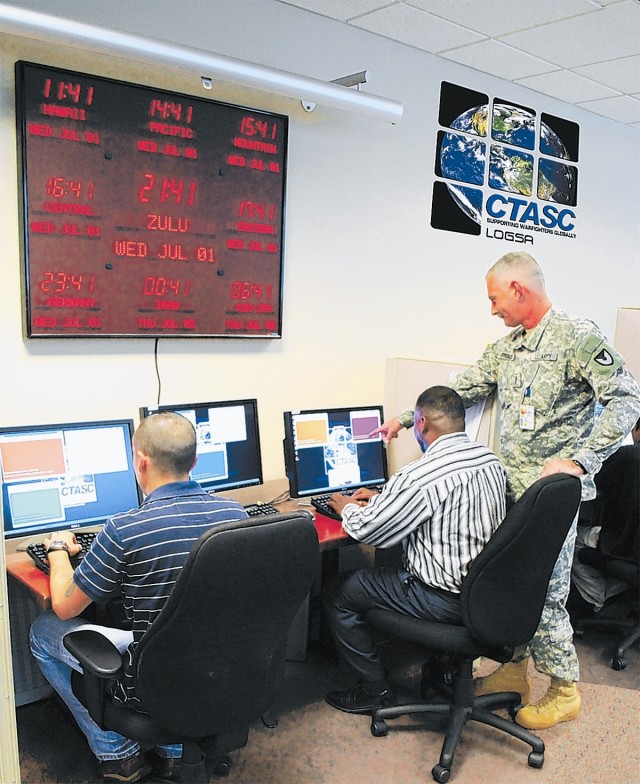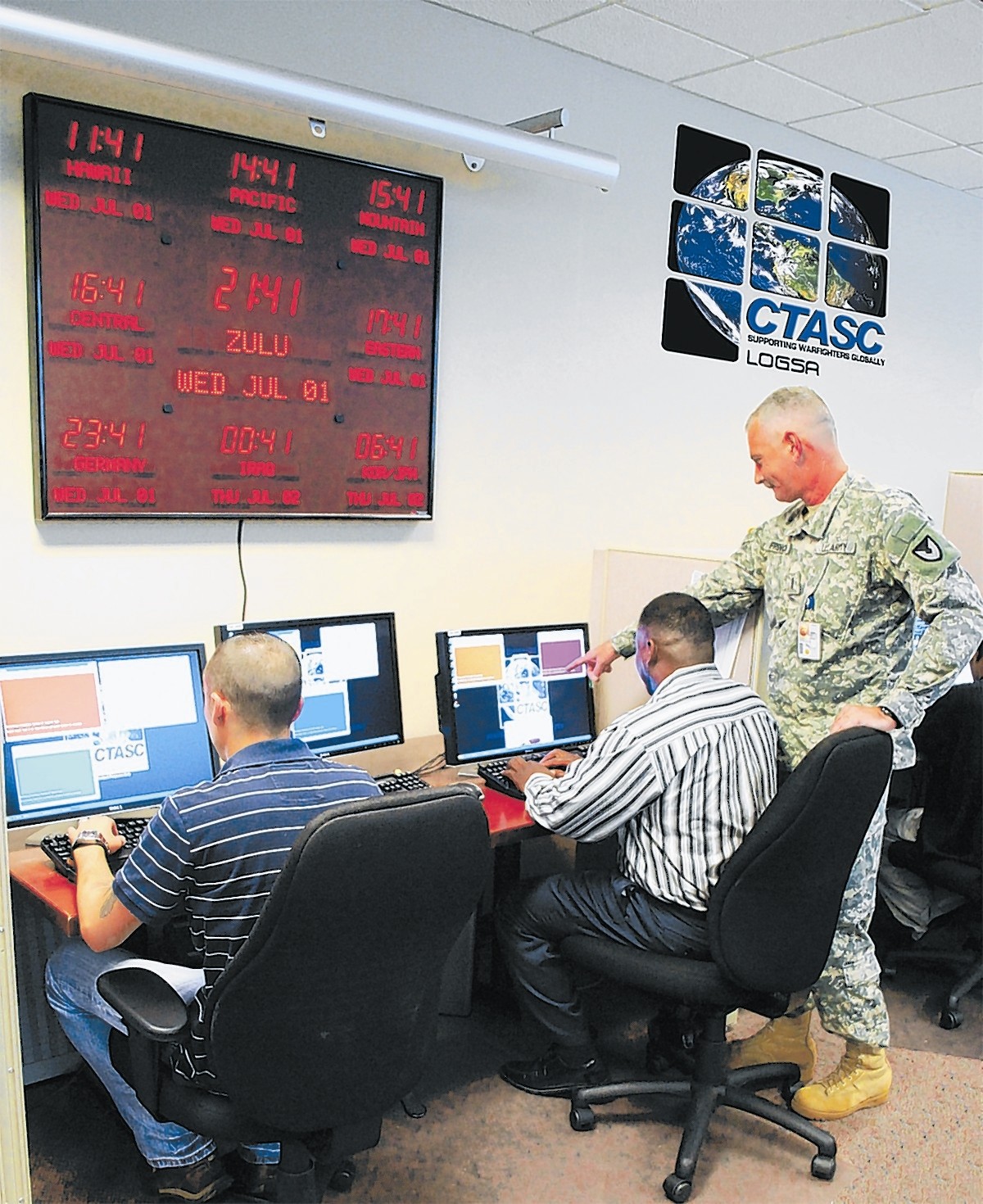
More than 2.5 million transactions processed in and out daily, 24/7 support for the war fighter 365 days a year, system access control of 30,000-plus access requests daily, vital research functions for the logistics community. What critical service center performs all these tasks'
Welcome to the Corps/Theater Automated Data Processing Service Center or CTASC. In a modest office in the Sparkman Center, there lies a vital part of the Army's logistical enterprise.
Collocated to Redstone Arsenal in 2006 from sites as far abroad as Korea and Germany, the LOGSA CTASC provides Armywide end user support for the Standard Army Retail Supply System application - the Army's tactical supply system - supporting supply classes II, III(P), IV, VII and IX by monitoring the flow of incoming and outgoing data and providing technical assistance with equipment and records.
The CTASC operates 24 hours a day, seven days a week, 365 days a year and is responsible for all SARSS input and output, daily backups of critical Army logistics data, and the monitoring of all communication links both onsite and off. In addition to responsibilities inherent to the main production site, a robust Disaster Recovery Site is maintained to provide absolute minimum downtime for mission critical operations in the event of catastrophic failure at the main production site.
Put simply, the CTASC is the critical gateway between retail level logistics and national level logistics.
Under direction from DA G-4 in support of the Army's intent to transition to a brigade-centric logistics structure - from 2006 to 2007, 10 individual CTASCs were collocated to Redstone Arsenal: the U.S. Army Reserve Command from Georgia; the XVIII Airborne Corps (ASC-EAST) from North Carolina; the 321st Theater Materiel Management Center (CENTCOM) from Baton Rouge, La.; the Installation Management Agency (ASC-IMCOM) from Virginia; the III Corps (ASC-WEST) from Texas; U.S. Army Europe (USAREUR) from Germany; 8th U.S. Army (EUSA) from Korea; U.S. Army Pacific (USARPAC) from Hawaii; and both National Guard CTASCs (NGB HQ and NGB TX) from Arkansas.
"The CTASC collocation has been a huge win for the Army, both in terms of efficiency and effectiveness," Chief Warrant Officer 5 Wade Lovorn, CTASC division chief, said. "While we always strive to get better, we have pulled this cell together and exceeded everyone's expectation."
This collocation produces large cost savings for the Army in significantly reducing staffing and reducing the production footprint of the operation as a whole. In addition to cost savings, the collocation enhances Army modularity and will ease the transition to a Global Combat Support System or GCSS Army - as well as providing an environment to foster rigorous oversight, standardized network and processing operations, and best business practices.
Today a small staff of contractors, Army civilians, and military personal (fewer than 50 people) make up a cohesive, hard-working team of IT professionals striving to serve their customers: materiel managers, financial managers, SARSS operators, and most importantly the Soldier in the field. The size of today's staff represents a savings of more than 80 military spaces which were placed back into the TO&E of the Army.
In the effort to provide the best service to the customers, many initiatives are under way within the CTASC. In the near future, the CTASC will commence major consolidate efforts along command and force structures lines. The nine individual servers - already consolidated down from 10 servers by combining National Guard operations - will be consolidated into seven servers. This will be accomplished by combining operations in the Pacific from two separate systems to one combined system and consolidating continental U.S. operations down to two systems from the previous three.
This continuing consolidation will result in more efficient operations and an even greater reduction in operating requirements with no adverse effect on service and/or support for the logistics community. In addition to consolidation efforts, a Continuity of Operation Plan exercise is planned for later this year as well as a hardware refresh of CTASC technical assets.
The CTASC continues to strive for excellent customer and technical services now and in the future.
"This team operates with the mindset of Gen. Richard Cody's mantra: 'Do not judge your relevance to the fight by your proximity to the battlefield,'" Logistics Support Activity commander Col. James Rentz said. "This division continues to do great work for Army logistics."

Social Sharing